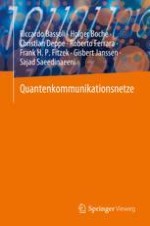2023 | OriginalPaper | Chapter
3. Quantencomputing und Programmierung
Authors : Riccardo Bassoli, Holger Boche, Christian Deppe, Roberto Ferrara, Frank H. P. Fitzek, Gisbert Janssen, Sajad Saeedinaeeni
Published in: Quantenkommunikationsnetze
Publisher: Springer International Publishing
Activate our intelligent search to find suitable subject content or patents.
Select sections of text to find matching patents with Artificial Intelligence. powered by
Select sections of text to find additional relevant content using AI-assisted search. powered by
